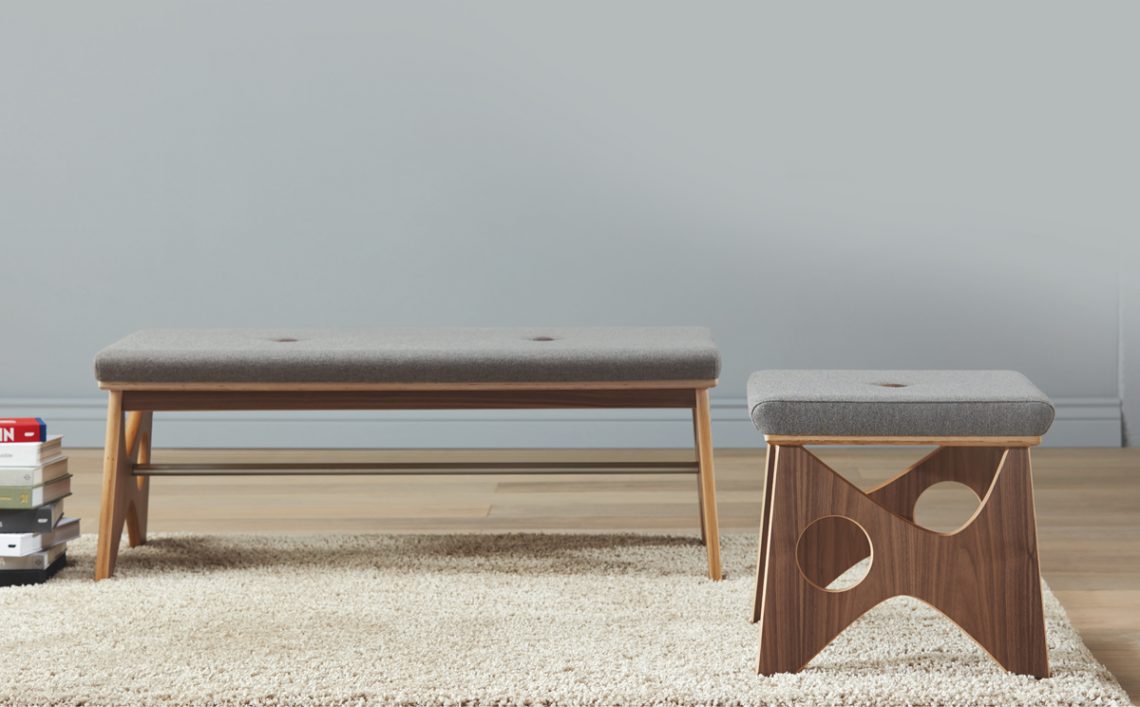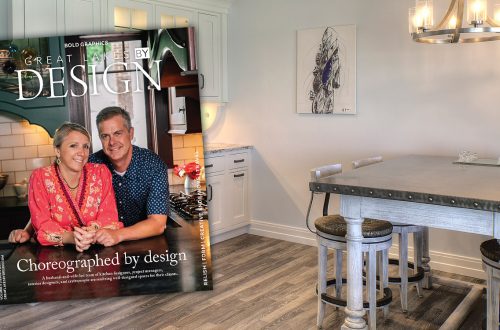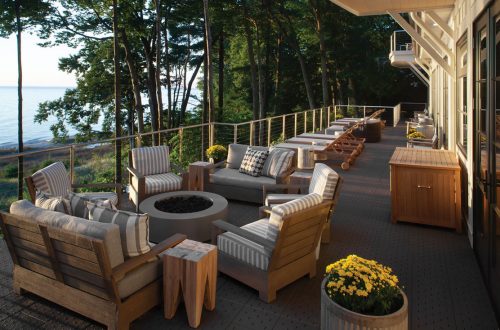The Rapson Thirty-Nine Collection is a masterful composition of lyrical, clean lines and a planar form incorporating both comfort and functionality. The furniture line not only leaves an impressionable mark as an authentic reflection of mid-century modernism, but also manages to capture the spirit of internationally-renowned architect and designer Ralph Rapson’s original concepts.
The dynamic and artful furniture pieces, which were made possible through collaboration between Leland International and the Rapson family, are part of the Grand Rapids-based firm’s Guild collection and feature a lounge chair, guest chair, benches, and stools inspired by original drawings completed by Rapson in the late 1930s.
Leland International is known for creating high-quality, design-focused furniture and partnering with other leading designers to craft award-winning products. When Tim Korzon, founder of Leland International, came across the Rapson Inc. brand and original design furniture pieces while renovating a residential project, the firm decided to reach out to the family.
“In researching the brand, [Korzon] learned about Ralph Rapson and he made an immediate connection with the Cranbrook Academy,” said Shanna Anderson, the lead of emerging markets for Leland International [at the time]. “[Korzon] had grown up in Bloomfield Hills, so he was really interested from a historical context.”
While Rapson’s architectural work was groundbreaking and comprises well-known projects such as the Greenbelt House and U.S. Embassies in Copenhagen and Stockholm, it was his skillful and innovative drawing ability that drew the attention of Eliel Saarinen, and ultimately led to a scholarship at Cranbrook Academy in Bloomfield Hills, Michigan. He would go on to not only become an award-winning architect and practice at Saarinen’s firm before launching his own in Minneapolis, but also have a successful career as a teacher at New Bauhaus in Chicago, and as a dean at the University of Minnesota.
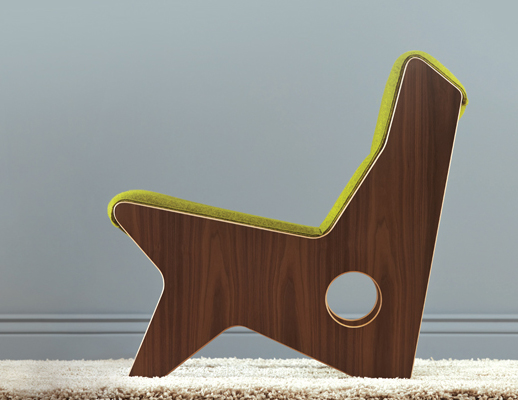 Bruce Sienkowski, owner of 2B Studio Inc. and product developer at Leland International, said Rapson’s career as an architect, designer, and educator affected the aesthetics of architecture throughout the world and touched the lives of generations of architects.
Bruce Sienkowski, owner of 2B Studio Inc. and product developer at Leland International, said Rapson’s career as an architect, designer, and educator affected the aesthetics of architecture throughout the world and touched the lives of generations of architects.
“We all are riding this wave of midcentury modern revivalism in the United States and really across the world, because it is popular in Europe too,” Sienkowski said. “The unique thing is Rapson may be one of the last of those guys [from that era] who have been untapped and undiscovered up until this point. It’s one of those best kept secrets we want everybody to know about.”
Rapson’s furniture designs, while not as well known, effectively capture a playful functionality and application of metal, fabric, and plywood. What began as an experiment at Cranbrook using the school’s open studio system, stayed with him throughout Rapson’s impressive professional career. Sienkowski said when he initially made the trip to visit Toby Rapson to review original sketches, he discovered there were works completed as early as the 1930s and through the 2000s.
“I spent four-to-five hours leafing through the archives of drawings they have of sketches and concepts [Rapson] work on basically during his entire professional career,” Sienkowski said. “It became obvious we weren’t going to be able to just say ‘here are a couple pieces, let’s go to work.’”
While the designs may have changed slightly throughout the decades stylistically speaking, Sienkowski noted it wasn’t as though Rapson abandoned any of the concepts but rather there was a difference in the type of materials or technology that would be used in manufacturing the pieces.
“The first area of exploration or design of materials he did was in this flat, plywood or planar look that we came out with called the Thirty-Nine Collection,” Sienkowski said. “It is related to 1939 and some of the earliest sketches he did we believe were done at Cranbrook. We expanded upon them to make it into this product line.”
The Rapson Thirty-Nine Collection by Leland, inspired by the midcentury modern 1939 compilation of sketches, not only features a number of upholstery options and frame veneers in either natural walnut or natural ash, but also a branded Ralph Rapson signature to certify the furniture’s authenticity. Using Rapson’s original designs, which in some cases were rather quick sketches, Leland International breathed new and tangible life into the furniture.
“We were able to stick pretty close to the aesthetic ideal of the design and maintain the true idea, as well as create the comfort, the scale, and the size people are expecting out of a product today,” Sienkowski said.
This meant adapting the dimensions slightly to accommodate for today’s consumer expectation, and changing a more experimental rope or wire suspension concept to a fully-upholstered center section in the lounge chair.
“We believed it would be a more commercially viable product, while maintaining the aesthetics [Rapson] had in that chair,” Sienkowski said. “We were trying to pull some of the other design cues from other chairs to make up the one.”
For the lounge chair, the end result comprised an upholstered shell with dimensions of 31-inches high by 24-inches wide, with a depth of 32.25 inches. The comfortable and dynamic form is complete with playful holes, which are visible along the side profile. The collection also features two other products with the same unique circular design along the side: the stool and the bench.
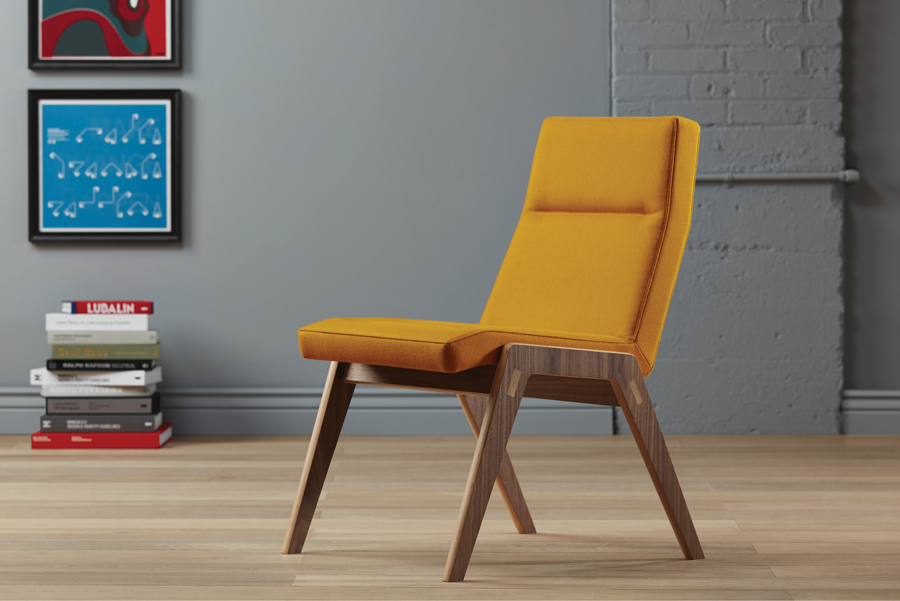
“The bench had a fairly well-defined concept, but we only had a side view,” Sienkowski said. “We extrapolated from it and as we went along we made sure we were always in concert with how the family thought the design would have come out.”
There is no doubt mid-century modernism, or at the very least a new interpretation of modern design, has come back in style. While there are other products on the market that have drawn inspiration from past designers, Anderson pointed out the difference and significance of what Leland set out to accomplish was being “as authentic to the original designs as possible with the understanding none of these were ever made before.”
“It has been a rewarding process, because a lot of our clients recognize the authenticity of what we are doing and feel it really is his true designs that were sketched but never realized. This spectacular furniture designer is almost being discovered for the first time for the vast majority of our clients in a very honest way,” Anderson said. “The Rapson family also feels it is true and accurate to his ideas and his visions.”
Leland International, in collaboration with the Rapson family, released The Rapson Thirty-Nine Collection in 2016 and is already in the process of developing a second line of furniture models based on sketches from 1948. The Forty-Eight Collection is based on a plywood shell and takes a very literal translation from some of Rapson’s sketches, while also expanding the concepts into broader product line, according to Sienkowski.
“For Leland to be successful in the commercial market, they need to have not just a single model chair, but certain models with certain features,” Sienkowski said. “This one particular chair didn’t offer a tubular base, [but] there were other chair concepts that did. We took a combination of pieces and parts to create this new design, but one of the models we are offering is a spitting image of his sketch.”
Leland International anticipates at the very least, prototypes and sample pieces of the new collection will be completed by this summer.
“To us, design is the balance of function, cost, and aesthetic to bring to life any one given product,” Sienkowski said. “In this case, we are taking the aesthetic created by [Rapson] over many years and bringing it to the marketplace with the idea in mind it has to be cost effective, it has to look good, and it has to function well.”
Text: R.J. Weick | GLBD Editor
Photography: Leland International
Originally published in Great Lakes By Design: Decoration and In Memoriam, May 2017

